#maximum horsepower
Explore tagged Tumblr posts
Text

Here's a little something eclectic: some obscure and less popular Disney characters. How many can you recognize?
Horace Horsecollar, specifically his incarnation from the never-made TV series Maximum Horsepower. This series was proposed in the 90s for the Disney Afternoon, but was never greenlit. It's too bad; I think it would have been a really fun series. Here's the original pitch reel by Tad Stones (creator of Darkwing Duck).
Gopher, from Winnie the Pooh. Prior to his cameo in 2023's Once Upon a Studio, Gopher's last animated appearance was in 2005 in Pooh's Heffalump Halloween Movie (and even then, it was only archive footage from 1996's Boo to You Too!). Gopher's only other appearances were in the Kingdom Hearts games. I'm not sure why Disney used him less and less, but it's nice to see he wasn't entirely forgotten.
Stinky Pete (The Prospector) from Toy Story 2. Pete was never exactly my favorite character as a kid, but some time ago I heard that there was an old character interview where Pete claims that he's happy with his new owner Amy, and really enjoys her decorating his face. I think it's the most adorable thing ever and I'm glad I finally got around to drawing it. (I've tried to find this interview, and I could have sworn I saw it years and years ago, but the only one I can find is this one where he's his child-hating self from the movie.)
Gurgi, from The Black Cauldron. I loved him as a kid, and that feeling never went away as I grew up. He is a brave and loyal friend and deserves all the munchies and crunchies in the world.
Buzzy, from the former EPCOT attraction Cranium Command. I unfortunately never got to experience this attraction (or even EPCOT in its prime). The attraction closed in 2007, and sat abandoned for years. The animatronic of Buzzy was reported missing in 2018, with little explanation of what happened to him. Here's a couple of fun videos on the subject. #JusticeForBuzzy
Terry and Keiko (the video chat friends) from the 1994 Jeremy Irons iteration of Spaceship Earth in EPCOT. I don't expect many people to recognize these characters, as they were removed in 2007. They weren't even moving animatronics, just still figures. But I think their friendship is super adorable, and it's neat to imagine technology that can instantly and accurately translate your dialogue into a foreign language. You can see Terry and Keiko here (at 12:23).
#horace horsecollar#maximum horsepower#gopher#stinky pete#gurgi#epcot#cranium command#spaceship earth#disney parks#disney100
163 notes
·
View notes
Text
Maximum Horsepower Pitch Trailer (Roughly 1996/1997)
Please note: I am uploading this for the sake of archival purposes and will remove at the request of the original uploader. Also huge apologies for the quality as this is how the video was initially uploaded.
In 2017/2018, Tad Stones (creator of Darkwing Duck) had quietly uploaded the original pitch trailer for the unmade Disney animated series Maximum Horsepower to his Twitter and Facebook accounts. Maximum Horsepower pitched Horace Horsecollar as the lead, and was intended to be a sci-fi action-adventure comedy. In the premise, Horace is abducted by aliens, experimented on and abandoned at the far reaches of the galaxy where the series would have focused on his misadventures trying to return to Earth.
I saved a copy of this video back in 2020/2021 for the sake of archival purposes and finally decided to upload it for the sake of archival purposes. I apologize for taking four years to debate about uploading it here.
Hope you guys enjoy it.
20 notes
·
View notes
Text
If you all remember this post I made about there being a tv show for Mickey, I was planning on adding characters to fill out the supporting cast.
I do have OCs planned out once I figure out a name and how to draw them, but I'm also going to borrow some characters, mainly those who appeared once or just appear in the comics.

Stacey
Attends Mouseton School of Business (same college Zan Owlson went to)
Helps out at Felicity's food truck business.
I really want Jane (the waitress at Funso's Fun Zone) to be her roommate. I mean she did say she wanted to go college and to get out of Duckburg (someone please consider drawing this!)

Chief O'Hara
Private Investigators often work with the police, so I imagine he and Mickey would have an amicable relationship where O'Hara would go to Mickey sometimes for help on a difficult case.

Gloomy the Mechanic
I have this OC that is a mongoose and Mickey's reluctant pilot, but I couldn't decide if I wanted him to also be the main mechanic to fix up the plane so that's where Gloomy comes in.
Took up the position as mechanic after Mickey and my OC swiped and later kept this plane they came across while working for a client.

Gideon
I'm choosing the first option I had for him.
Since he's not really supposed to Gideon McDuck here, I guess I can't use the name County Conscience for the name of his newspaper.
I mentioned that Minnie was a freelance journalist so she would write a couple of pieces for their newspaper.
Okay so the characters I have listed here are more like minor or background characters:

Crash Happies
The Crash Happies would be an indie band that actually exists.


Horace Horsecollar & Clarabelle Cow
Horace and Clarabelle are part of the cast too, but they only appear as TV characters for the in-universe sci-fi adventure series Maximum Horsepower (based off of the unproduced Disney series by Tad Stones).
For the show, I always thought of it as a combination of Buzz Lightyear of Star Command and Guardians of the Galaxy.
They do not know who Mickey is.
#PI Mouse AU#mickey and friends#mickey mouse and friends#a goofy movie#stacey#stacey a goofy movie#a goofy movie stacey#chief o'hara#gloomy the mechanic#duckverse#gideon mcduck (sort of)#ducktales#ducktales 2017#the crash happies#horace horsecollar#clarabelle cow#maximum horsepower#disney
52 notes
·
View notes
Text

Funny story about this WIP, I was already asleep for about an hour. Out of nowhere I woke up wide eyed and grabbed my iPad to sketch this. Only to knock out right after like nothing happened. Anyways a new Maximum Horsepower WIP. :3
44 notes
·
View notes
Text
1968 Dodge Charger R/T ❤️
426 V8 Hemi 4-speed
Compression Ratio: 10.25
Horsepower : 425 HP / 431 PS / 317 kW @ 5000 rpm
Maximum torque : 489 lb-ft / 664 Nm @ 4000 rpm
🇺🇸🦅 #Classic
429 notes
·
View notes
Text
Bicycles kick a lot of ass these days. When I was a kid, a bicycle would only go as fast as you could pedal. Maybe, if you were really a huge asshole, you could take the bus to the big city and buy one of those mini-moped kits from a motorcycle shop. Then you could break playground-zone speed limits with enough two-stroke burble and pop to arouse every police officer within thirty miles.
Nowadays, you can slap some Chinese-made wonder magic on your Norco and do three or four horsepower without even knowing how to solder. In fact, it's much better if you don't know anything about electronics, because that level of knowledge will prevent you from extracting the maximum value out of your investment of "some vape batteries" and "a motor I found on Amazon whose name YouTube can't consistently pronounce." Electrical engineers are just too damn afraid of fire to go really fast.
Sure, you have to show fealty to the all-knowing microcontroller inside the magic motor box. Pinky-swear to it that you live in the hypothetical lawless wonderland that would allow you to have this much wheel-bending, mind-melting torque on a public pedestrian pathway. Honestly, it's its own fault if it believes a shifty character such as yourself. Not that the local cops are going to pull over Bob Tongsheng on his way to deposit your money in his bank, either. It's this kind of primitive hot-rodding that once made this country great: neglecting the existence or worth of anyone and everything outside of your vehicle in lieu of Go Fast.
Sure, this sort of thing will only last for awhile. Pathways are already filling up with lots of zingy e-mopeds and e-deathscoots, ridden by perfectly normal people. Your 1500-watt stealth bomber build is going to get pulled on by a pensioner within a year or two, as the market begins to demand enough cargo room (and rollover protection!) to do a once-a-month Costco run with the entire fam in tow. Inevitably, the cops are going to have to crack down on the whole deal, too.
For a glorious, shining moment, you too can dig a rusty mountain bike out of a creek and have it doing 50 miles an hour by watching a YouTube video. That's something previous generations simply could not have imagined. Which is their loss, really. If they had gotten off their asses earlier and figured out the lithium-ion battery, we could all be driving $100 50-horsepower ebikes right now instead of having to pay Big Battery for the "latest and greatest" in burning your garage down.
247 notes
·
View notes
Text

The Chrysler 426 Max Wedge
In the early ‘60s, Chrysler unleashed the 426 Max Wedge, a race-bred powerhouse built to dominate NHRA Super Stock and A/FX classes. With high-flow heads, 11:1+ compression, and a wild cross-ram intake, it cranked out up to 425 hp and turned Mopars like the Dodge 330 and Plymouth Belvedere into quarter-mile monsters. Straight from the factory, these cars were running low 11s, making the Max Wedge a force to be reckoned with.
For those looking to push the limits even further, the Navarro 4 Bonneville intake shown was a rare but effective option. Designed for maximum airflow and fuel distribution, this intake setup optimized performance for high-RPM racing applications, making it a sought-after piece for racers looking to squeeze every ounce of power from their 426 Max Wedge builds.
Two legends of speed—one built for the strip, the other for the salt, both defined by raw horsepower and innovation.
#car#cars#muscle car#american muscle#mopar#moparperformance#moparworld#moparnation#Chrysler 426 Max Wedge#chrysler
140 notes
·
View notes
Text
Why Greaseball is a Really Great train villain: a looong post (4.8k words) on all the historical train context behind replica Greaseball

For all my issues with the other main engines, I think (replica) Greaseball is FANTASTIC. He just works on so many fundamental levels and gets so much better/worse with historical context. If we make him an EMD E9 locomotive (a common headcanon) things get even more interesting, and there’s even a convenient irl engine to base him on!
Note: if you’re into real US trains this info probably won’t be as new to you as my Nez Cassé post, since E and F units are so well preserved and documented in English. A lot of the topics I go on are pretty widely discussed in US railfan circles and not terribly obscure. Also this is just about replica, Elvis-style Greaseball vs Wembleyball… her being more modern and European changes a lot and I would take a very different approach.
Also CW for non-graphic discussion of abuse in the very last section. I have a separate warning before it comes up so you can leave before then.
DIESEL TRACTION IN THE US
First of all, to clear up a common misconception: 99% of all diesel locomotives are diesel-electric. The diesel engine is used to generate electricity to power electric motors to turn the wheels. This is why dual-mode engines that can switch between drawing third rail/overhead wire electricity and making their own with a diesel engine are so common. Besides the power source, they work similarly, so it’s not hard to incorporate. This is NOT how hybrid cars work, though diesel-electric setups have been used on very heavy trucks for purposes like mining. Diesel-mechanical is more in line with how automobiles work but is basically unheard of outside of very small switchers in the US (mostly in museums now) and 50s-era shunters and that one weird Fell diesel in the UK. The technical reasons of why isn’t really important here, but has to do with the difficult of making an appropriate gearbox for road locomotives and appealing qualities of electric motors for train use (high starting torque).
Internal combustion-based locomotives are actually much more recent than pure electric ones. Electric engines achieved practical use around the 1890s and were well-established in urban and mountainous areas by the 20s-30s…. which is when diesel boxcab switchers first started production in substantial numbers and lightweight diesel trainsets like the Zephyrs, M10000, and Flying Hamburger started to pop up. The earliest diesels were either slow (switchers) or fast but very weak (lightweight trainsets and railbusses). There were major tech limits to maximum horsepower in diesel locomotives until the second half of the 20th century, which is why several of them were often needed to replace one steam or electric engine, and why you had some weird turbine designs in the 50s-70s as an alternative.
Early diesel locomotives in the US actually had a lot in common with their early implementation in the UK. They’re often perceived differently because Thomas the Tank Engine had so many characters based on unsuccessful early British diesel models, while most of the failed earlier US diesels are obscure compared to the successful and widespread ones (that often have the strongest museum presence). There were some notably good early switcher models (some still being used today) that were among the first to replace steam engines because it was one of the tasks that they had the biggest advantage over them in, and limited size wasn’t an issue. Road diesel implementation was messy and due to the early state of the technology, some railroads like the Pennsylvania Railroad had a strategy more akin to early British Rail in that they planned to just slowly phase out steam as they electrified. Higher wages and stronger unions were also a factor in both countries dieselizing, due to the vastly lower labor needed for diesel locomotives vs steam and generally safer, more pleasant working conditions on them. There was also a need to shed a reputation for being outdated to draw in customers again with both. There was also a desperate early demand for diesel power that led to a lot of questionable builders and designs being picked up early on and later dumped for being nonstandard.
The main difference is that dieselization’s serious pursuit in the US started around the Great Depression and really picked up in the late 30s, almost two decades before the Modernization Plan of 1955. So it was a far more mature and well-established technology by the 50s and Greaseball is very much based on this dominant position vs the messy early experiments of the Thomas diesels.

Greaseball’s helmet heavily resembles the fronts of the E and F unit carbody locomotives made by EMD from the 30s-50s. I’ll go into those specific models later, but the manufacturer alone is really interesting and has a lot of great symbolism that works with Greaseball.
Earlier diesel manufacturers included steam builders like Alco and Baldwin, outside companies getting into the diesel locomotive market like Fairbanks-Morse, and EMD, which started as an independent company but quickly became part of General Motors. One of the major advantages EMD would acquire is mass-production in assembly lines, the way cars were made, as opposed to building one engine at a time like steam shops did. So Greaseball has some quiet ties to the auto industry (and boy did GM hurt trains in other avenues). They also used common parts between models, making them relatively easy to repair and rebuild. You had all kind of mods and changes done to their engines over the decades, which is a fun tie-in to the bodybuilder AND greaser aspect of Greaseball. I’ll go into how I think he’d specifically be modified/rebuilt later though.
Another major factor of EMD is… they often weren’t the best in a lot of ways and very much an example of “survival of the good enough”. Until very recently they all used relatively dirty and inefficient two-stroke engines and other manufacturers often had stronger or technically superior competing models… but it was the ease of working on them and relative reliability vs their competitors that contributed to their success and helped make EMD the dominant manufacturer.
Bonus fun fact: EMD (and later General Electric) had a lot of success in the export model market due to their early reliability, especially vs British diesel engines. One of the funnier instances being several colonial African railways holding onto steam into the 70s because they were forced to buy crappy British diesel engines otherwise, and promptly dieselizing as soon as they could buy American ones. EMD made huge inroads into the British freight market with the Class 59 and 66 (the latter also used in continental Europe). These came too late to have had any affect on the development of the show early on, but it’s an interesting instance of American encroachment that could be thematically relevant. The sheer ubiquity of EMD diesels worldwide makes Greaseball weirdly relevant in a lot of countries if you basis swap him a little. I haven’t figured out quite how I’d approach Girlball but I’d definitely make her one of these export models since it fits.
Anyways, back to the general history timeline because it’s important for the other reason EMD was so successful. By the late 30s, diesel switchers were widespread and road models were starting to come out in limited numbers. Widespread dieselization would have happened nearly a decade earlier if not for World War II. When the US entered the war, copper, oil, and diesel engines became critical to the war effort. Coal was not and steam engines don’t use much copper, so the existing steam manufacturers were forced into building them. EMD’s FT series had proven itself prewar and the company was among the few to be able to develop their locomotive lines during the war. This gave the company a huge advantage post-war and their E and F units dominated the road locomotive market afterwards (switchers remained more competitive since they had more development before and during the war).
If you’re European and know little about American trains, you may wonder when things started getting electrified after that. They didn’t. Outside of one stretch of the Northeast Corridor, a recent project by Caltrain, and some isolated freight lines… the US didn’t electrify anything after WWII, and if anything de-electrified much that had existed. The oil crises of the 70s almost led to something, but the subsequent drop in prices in the 80s made that dry up too. Leading to the modern day status of having only 1% electrified rail mileage. The rest is all diesel domain. They were never a stopgap here. Due to railroads remaining private businesses post-WWII and facing almost unwinnable economic and political conditions vs roads and air travel, the cost of electrification was out of the question and the much smaller up front cost of diesel engines made them take permanent hold over most of the country post-steam. To this day, railroads avoid paying up front for things vs just paying more in yearly maintenance for diesel locomotives, and the price of fuel has never gotten high enough to incentivize electrification. There’s also a whole carrot vs stick situation with state governments raising emissions standards without providing assistance to electrify that leads to a crappy state of limbo that just gives automobiles even more of an unfair advantage, but that’s another tangent that’s not relevant enough to go into.
This is all a long way to say that Greaseball as the conservative, oppressive establishment is spot-on to the status of diesel traction in the US. It really can’t be overstated how dominant and inescapable it is. It’s kind of hilarious hearing people from the UK or Europe talk about how gross and stinky and backwards they are and how much more disliked they are there. This is why the Greaseball vs Electra feud is so appealing to me- the US is one of the few places where they would be considered remotely competitive and where that matchup is politically relevant. There’s this compelling thread of Greaseball being a “pragmatic compromise” that’s held on so long it’s become status quo, but would be viewed as a regressive relic elsewhere in the world, akin to how the US’s economic politics are seen in much of the rest of the world. Greaseball is the majority who very much has capitalism and inertia on his side, Electra is the more qualified but long-sidelined minority who wishes things were even a little more like Europe economically and politically. They’re so rural vs urban, right vs left wing coded it hurts. Diesel power mainly thrives where frequencies are low and distances are long and rail is a private business that often can’t afford to electrify. Urban trains are almost exclusively electric due to their inherent frequency and pollution requirements, and are almost synonymous with being state-owned.
Him being particularly nasty to steam engines also checks out, he’s the era of diesel locomotive that often directly replaced them and I’ve seen claims EMD did deceptive things if not outright cheated on tests vs steam engines. At the very least they had fairly aggressive marketing. There’s a reason why I object to the idea that Electra would cheat against a steam engine (even in the early days electric ones trounced them so thoroughly it routinely exceeded railroads’ expectations), but think Greaseball doing it makes sense. Him playing dirty against Electra also makes sense because they’d have similar top speeds (and that’s being very conservative with Electra’s abilities and keeping them a relatively old model) but Electra benefits far more from a clean setting and would be relatively vulnerable to attack. There’s been decades of cultural downplaying of the advantages of electric vs diesel trains due to the latter’s sheer dominance in the US too. Further tying into the political aspect, electric trains are one of those things whose status only goes up the more you actually learn about them… and it really knocks combustion engines down several pegs, paralleling how right wing politicians in the US tend to be actively anti-education because they quietly rely on voters being low-information and uneducated about how negative the effects of their policies often are.
Greaseball as a macho jock is also reflective of the perceived strength of diesel vs electric engines. Because the US is infamous for its large heavy freight trains that are almost entirely diesel-hauled (besides a single power plant out west), electric freight is an almost alien concept and people associate electric traction with high speed trains, subways, maybe lighter, faster European freight trains at most. People often act like they’re weak because of this. This is patently untrue, just look at IORE or the Virginian Railway. Also see my earlier discussion of how weak diesel engines were early on. Electric locomotives still have vastly higher horsepower per single unit and the only reason there aren’t ones as strong as diesel engines in the US is lack of demand. It wouldn’t be that hard to build one for that niche. But diesel has strong associations with being the “strong and manly” blue-collar option because of its use by every large freight railroad and almost every shortline for all the tough, gritty jobs, unlike those darn city slicker commuter trains. Let’s just conveniently forget that the Milwaukee Road existed and that mines are full of weird little battery-powered “lokies”. People will even crow about the Big Boy all day and rarely acknowledge the multiple electric engine models of that era with comparable abilities.

EMD E and F UNITS
Finally, we can discuss Greaseball’s more specific basis. Greaseball’s helmet doesn’t have a single explicit one like Electra’s, but its styling is very typical of 30s-50s era carbody diesel locomotives, specifically the “bulldog nose” E and F-Units. These models were and still remain some of the most popular toy and model diesel engines, and are some of the most recognizable American trains in general. Which they totally deserve, they came in a lot of fun colors and were VERY widely used from the 30s to early 80s irl and were still used in limited numbers for decades after that and are extremely common in museums today. It’s probably harder to find a railroad museum in the US that doesn’t have one. They are probably THE symbol of diesel trains in the US, especially circa the 50s. Even highway signs for train stations resemble them.
Carbody locomotives like these made the streamlined body a structural element of the engine to save weight and required indoor walkways for maintenance access vs being able to open external panels. Alco and Baldwin also made far less successful carbody locomotives as competitors but they looked very different. Funny enough, a number of electric locomotives of the era also were built this way, but with cabs at both ends, some of them looking a LOT like Greaseball’s helmet.
The E-units were EMD’s first line of road diesel locomotives, mainly designed for passenger service. Since the 30s there were several different models of the line, the first few being built in smaller numbers, and the later ones being much more widely produced post-WWII. They were relatively long and large for a diesel engine of the time, with atypical A1A -A1A (powered/unpowered/powered x2) wheel arrangements and two seperate prime movers (the actual diesel engine) to produce more horsepower due to the limited abilities of individual engines. While successful compared to their competitors (which were… generally a mess) there’s a sense that they were designed for a time that would never come.
They were very much optimized for being smooth at speed for passenger use and while not useless for freight service, weren’t ideal for it due to their limited strength and not having all powered wheels for traction. Which was a terrible market to be in with the massive decline in passenger rail post-WWII. The E-units still generally had long and successful lives, but were never as successful as their younger, smaller sibling, the F-unit.
F-units visually resemble shorter E-units, but with single prime movers and Bo-Bo wheel arrangements (four powered axles). By modern standards they’re small and not terribly powerful, but for their time they were solid and VERY successful in freight service, and often took the place of E-units in passenger service since they worked for that too, and were more versatile overall. There are a bunch of F-units running in museums because they look good and are easy to find parts for due to the sheer quantity produced (also some, but far fewer E-units). You could totally make Greaseball an F-unit and it would fit with how there’s been some infamously short Greaseball actors.
There’s a lot of fun commonalities between both models that are relevant to Greaseball. Both were explicitly designed to be used in multi-engine sets due to their limited individual strength, which perfectly fits Greaseball having his Gang follow him around. Working in packs that large is a VERY midcentury diesel thing. Both had the massive drawback of having no rear visibility and basically no ability to go backwards for switching. That was one of the main traits that led to this style of engine falling out of favor, roadswitchers that actually had rear visibility were more versatile than having separate road and switch engines. In a race going backwards, Rusty would clean his clock even if he was SUPER crappy and could only go walking pace, because Greaseball would be flying totally blind and crash. It’s also a hassle to perform maintenance and get inside that body style and the noses were reportedly harder to manufacture.

As a cursed side note, ATSF solved these problems with their old F-units by roadswitcherfying them into CF-7s. Hey, they were old and past their prime but still useful and worked GREAT as ugly utilitarian roadswitchers and ran for decades afterwards. There’s several of these things running in museums. I’ve actually worked on one and I approve of roadswitcherfication because they really are way less of a pain to maintain this way.
Speaking of rebuilds, the highest horsepower Greaseball would have as an E-unit would as-built is only 2,400 if he was an E9, but because early EMDs got modified so much and routinely re-engined, we can play around with this. It fits the character and the Railways Series routinely did this kind of thing. We’ll suppose Greaseball was re-engined or otherwise modified to get up to 2,700 horsepower… but then there’s the reported issue that the unpowered axles might make him too slippery to actually apply full force, so we’ll get a bit more out there and say he got more substantially rebuilt into a Co-Co (six powered axle) arrangement. Now you have something that would be vaguely comparable with one of Amtrak’s dysfunctional SDP40F diesels of the late 70s-early 80s, if still a bit weaker but probably more physically stable. It’s hard to avoid that Greaseball is kind of statistically wimpy no matter how you slice it. They’d need to tweak the numbers in the song a little, but again, swapping out engines in early EMDs was super common and suits him so it’s not too much of a stretch to bump him to 3700 or something. You still have issue that he’s not large by UP standards specifically (they are INFAMOUS for large single-unit engines) but he’d still be fairly large vs more typical passenger diesels of the time.


Anyways, another VERY fun fact about E and F units is that they were regularly used on corporate trains after most of them were withdrawn from regular mainline service in the 70s-80s. People often complain that Greaseball is barely relevant circa the 80s, which isn’t really true since a lot of E and F units were used on commuter lines for years afterward (if often in cab car form, which are terrifying in any talking train verse). But there’s another huge loophole that gives a perfect excuse for his existence well into the modern day. Union Pacific itself used a set of three E9s on their corporate specials until 2019! They only got pulled due to wheel issues… got no lovers if you got no wheels I guess. But now you have a perfect excuse for why Greaseball is a 50s-era engine with UP colors pulling passenger trains well after the railroad axed those services in the early 70s. He’s a corporate pawn! He’s one of the faces of their company, chauffeuring executives around. Which leads into another fascinating topic with him.

UNION PACIFIC, FREIGHT RAILROADS, AND PASSENGER RAIL
All of the modern big Class I railroads in the US suck in similar ways, but Union Pacific has a stronger identity and seems to have the largest cultural presence abroad, making it the most visible and appealing of them to the public. It tends to be THE American railroad to many, which goes well with Greaseball’s basis being THE American diesel engine. Yes, they do have some cool heritage fleet stuff and really cool heritage unit paint jobs, but you’ll never see me depict them in a terribly positive way (if at all) because they’re a PR campaign like the Budweiser Clydesdales for an infamously awful company. Make no mistake, this is a company that’s been voted “worst place to work” on multiple occasions (and its cohorts aren’t much better). That’s the ironic thing about Electra being made a crappy boss, Amtrak is notably much better to its workers (and steam engines are the most competitive where labor is cheapest and least organized). The main thing is unreasonable on-call hours, lack of sick leave, vacation, and break days in general, and working conditions. Look into the blocked 2022 railroad strike for more on this. Greaseball could be SO nasty to the freight to reflect this if you made him a symbol of railroad leadership. You’d have any railroaders in the audience booing him if they did this in the US, it’s a very relevant political issue. Ironically, things weren’t nearly as bad labor-wise in the 80s, ALW just really bet on the right horse in terms of railroads to align a train villain with. But there’s a more prominant and existing aspect of canon that also fits the crappy things UP and other class Is do.
Passenger rail has never been as profitable as freight in the US. To give a modern ballpark estimate, I’ve heard $30,000 revenue on a fully loaded longer passenger train vs $500,000 revenue on a train of oil tankers. And that’s not even including the higher maintenance standards that passenger rail requires, which adds millions to its cost and makes it almost impossible for it to turn a profit. There is a reason why almost all countries with widespread passenger rail today have nationalized rail systems and even US passenger service is all government-run outside Brightline and museums.
This situation was particularly bad in the 50s-60s before Amtrak took over passenger service. Passenger trains absolutely bled money overall, and many of them were required to keep running even at massive losses per government regulation because they were an essential service. This contributed to the financial ruin of many railroads, and most of them dropped passenger service or sold it to the government as soon as it was offered. UP in particular was more financially stable, but also happily got rid of their passenger trains when offered.
Since then, the giant merged Class I railroads have become almost exclusively freight-oriented and hostile towards Amtrak-run passenger services. They’re almost all terrible, but UP is one of the more visible offenders, holding up commuter services in Chicago, and contributing to the massive delays in long-distance western trains. “Coach sexism” in the form of widespread hostility towards passenger rail by the likes of UP is one of the few canon social metaphors that WORKS. The other engines would not be that way considering the systems they’re aligned with, but Greaseball could be made so, so much worse.
There is a weird element of “I hate my wife” boomer humor when people describe passenger trains. There’s “keeping freight trains in line” schedule-wise due to their time sensitivity. There’s being seen as needlessly spendy for PR reasons (often true in the older days) paralleling “my wife wastes money on stupid things”. There’s being seen as more delicate and refined due to needing better track conditions and gentler handling because you know, humans have standards that grain hoppers and sand don’t. There’s the way that passenger rail isn’t as profitable as freight and basically requires government subsidies… not unakin to caring jobs and “women’s work” in general vs blue collar industrial jobs (Caveat: passenger rail employees were almost all male until Amtrak). In short, yeah the freight railroads’ treatment of passenger trains in the US does have parallels to sexism, if slightly different from how canon does it. Abruptly dumping them in the 70s also fits Greaseball ditching Dinah mid-show.
Even if you go the comparatively mild route of mirroring modern railroads, you still have him treating the coaches as second class vs freight (despite them being legally prioritized). This is a major issue and why Amtrak has so many delays on long distance trains. To summarize a complicated issue: due to the relatively unique economics of railroads, they are incentivized to run fewer, longer, irregular freight trains that have become so large they don’t fit in sidings and can’t physically let prioritized passenger trains through. They then get delayed for hours, especially if the freight train breaks down (bonus: freight trains have a staff of two, engineer and conductor. The conductor may have to walk up to THREE MILES to check out a possible defect on a car, delaying even more). The Class Is have a broadly hostile relationship with Amtrak in general for various reasons related to insurance and minimal investment in track maintenance, and it even affects non-Amtrak passenger services like steam excursions. UP has its personal steam fleet for publicity reasons, but all of the Class Is are various shades of hostile to running steam excursions with passengers now due to those same reasons. Even UP barely sells public tickets for theirs.
Bonus: the reason Mexico has basically no passenger rail now is due to the nationalized railroads being taken over by companies heavily aligned with US freight railroads and with many similar attitudes towards passenger service. They ditched virtually all of it en masse when they took over. Turbo works perfectly as just Greaseball but in Mexico because the same thing happened there… only a few years before the Mexican Stex production happened. Electra might be an even more pathetic and unthreatening character there though, because the single, long-delayed electrified mainline built by NdeM was ripped out after only a few years of service by the private freight railroads.
WARNING: Leave now if you do not want to read about how abusive Greaseball could be made based to US railroads’ treatment of passenger trains pre-70s. It’s not graphic, but it is blunt and dark. I put this at the end for a reason, there is nothing beyond this last section.
Basically, canon even at its worst arguably undersells how awful Greaseball could be to Dinah and the coaches if you make them symbols of UP and other major railroads vs passenger service pre-Amtrak. They could be even MORE toxic. You have a situation now where he outright hates her and wants her gone for above reasons, but is forced to stay in the relationship due to outside requirements and is fundamentally built for that kind of setup as an E-unit. Railroads forced to keep passenger services usually didn’t have mandated quality standards for them. They just had to have something. This led to pathetically short trains (one or two cars), understaffing, and poor maintenance because they just had to have SOME passenger train on that line. Track conditions reached terrible standards in the 70s on railroads that were near bankruptcy and delaying maintenance. I absolute do not blame canon for not going this dark in a kids show, but basically there is no limit to how miserable Greaseball could make her life, short of actually killing her. I can’t understate how much she symbolizes something he’d want to rid himself of at any cost but can’t and will take that out on. It’s BLEAK. I don’t think I’d even write them this dark myself.
Well… now you see why I do not redeem and revise Greaseball the way I do Electra. While the latter is wrongly demonized in an impressive number of ways, Greaseball is awful for all the right ones, to extents deeper than the creators probably ever imagined. He is so versatile and nearly timeless in his awfulness. If Greaseball were portrayed as remotely good I’d be ripping him to greater shreds than I do Rusty, but he’s great as a hateable bad guy who’s entertaining and globally recognizable even by much of the general public. Despite all this, I’m fine with him just being a cartoon bully because it’s more palatable and not wrong. But you could also make him so much nastier than even the workshop if you wanted to go darker.
#Stex#starlight express#technically this is character hate but it’s about how he’s great at that as intended so it’s maintagged#because he really is such a compelling and horrible character the more you look into it#probably the major character i’d most want to play because i’d incorporate a lot of this to make him nastier#he is the embodiment of so many past and present rail issues in the US and weirdly effective abroad too#reference#also lol this is why you will never see me talk very positively of Uncle Pete (or other big US railroads)#the fallen flags i’m fascinated by are more like watching a train crash than stanning. based on who made the funniest bad decisions#can’t overstate that i’m also fine with greaseball being played more stupid and cartoonish and less malicious#it’s genuinely very hard to go wrong with replica greaseball for me because he works in so many ways
63 notes
·
View notes
Note
bucket of facts here. This is one of my favorite f1 things ever, apologies for how long it ended up being:
In the 1980’s, formula one teams, notably BMW, added toluene to their fuel mixtures. If that word sounds like it’s probably dangerous, that’s because it is — most people know it as rocket fuel. It’s extremely poisonous and carcinogenic, but did have some upsides! For one, it was less volatile [citation needed] than what they had been using, making is slightly less dangerous in the event of a crash (by 1970’s-80’s F1 standards that just means in only turned into a small bomb most of the time). It was also denser and burned faster, so the same amount of toluene could give much more power than the standard F1 fuel.
While the new fuel did allow them to run higher turbo pressures, it did it have a tendency to increase turbo pressure as it was run during the race, and everyone ran turbos at this time. They had to dial back the turbo pressure from what it’s max could’ve been, just to compensate for the power of the fuel — this mitigated the admittedly high likelihood that the engine decided to submit its two weeks notice on two seconds of warning (read: it caught on fire and sometimes kinda maybe sorta just exploded).
Modern f1 fuel has an RON octane rating of 95-102. The toluene aided fuel had an RON octane rating of 120+. For context, your car probably runs on about 87 RON. For those unfamiliar, RON octane ratings measure how much compression fuel can be put under before it sparks, which is how engines work: compress fuel, spark, make power (I can explain that better if you want but short version is that). This incredibly high octane level allowed the engines of the time to be run at a much higher compression, which had a myriad of bonuses to the cars.
Current F1 regulations are 1.6 litre V6 engines that rev to 15,000 RPMs (max allowed) and produce a max of 850 BHP (horsepower) when they’re pushing the edge of their abilities without aid of electric components like H/KERS, which is used to boost the cars to around 1,000 BHP.
Brabham-BMW’s 1983 engine took Nelson Pique to his WDC that year. It was a 1.5 litre inline 4 (so smaller than current) and produced 12,000 RPMs, as the restrictions were a bit tighter there back then. Without electronic aid like today and a smaller engine than your standard Toyota Camry, it easily produced 850 BHP at race trim, the version built to last a whole race. When in qualifying trim, with everything tuned to maximum to get the most out of the car without it blowing up, it ran at 1,250 BHP. Original testing put it at producing over 1,400 BHP, but BMWs testing facilities couldn’t measure past that — the car put out more power than they could even register.
The teams also had a sneaky loophole: the amount of fuel allowed to be held at once in the car (refueling was banned at this time) was effectively limited to how large the gas tank could be. The teams realized that they could literally freeze the fuel and store it at cold temperatures. This compacted the fuel, allowing them to put more fuel into the gas tank — more fuel per fuel, really. This allowed drivers to be more aggressive and push harder more often, not having to worry about running out of fuel.
In case this whole toluene thing seems bad, don’t worry! It’s only used in nail polish, rubber, adhesives, and paints :3
hit me up for more facts if you want
oh my
anon bestie i might in fact be in love with you
#u definitely delivered with your fact this is so fucking silly#f1: exploiting loophole since the beginning of time#not a tag#from saph#f1#pls send facts whenever u please this is wonderful
114 notes
·
View notes
Text






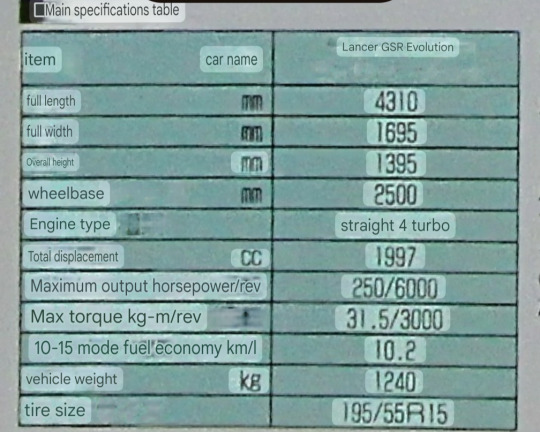
CD9A LANCER GSR Evolution
Test drive!!
The long-awaited Mitsubishi Lancer GSR Evolution has finally arrived! This car is the strongest model developed to win the WRC (World Rally Championship), and it has 250 horsepower despite being 2000cc.
It's a monster!!
Report: Shinichi Takase / Camera: Tetsuya Saito
Is this a car?
A car built to win rallies
If the Skyline GT-R is a car created to win races, then the Lancer GSR Evolution is a car developed to win rallies.
The GSR, which was originally a popular car, was equipped with an 1800 DOHC turbo engine and combined it with full-time 4WD, and was already an extreme car, but by replacing the engine with a 2000cc DOHC turbo with 250 horsepower, the original small and lightweight body was further enhanced with more power. It is a car with outstanding fighting power.
This is the engine
The most powerful in its class is 250 horsepower!!!
Based on the old Galant VR-4 inline 4 DOHC turbo, it has a large intercooler and a change to compression ratio. The engine is 10 horsepower stronger thanks to a combination of measures such as increasing the weight of the engine and reducing resistance inside the engine.
Furthermore, the engine's original characteristic of tenacity at low revolutions has also been improved, with the maximum torque generated at 3000 rpm, up from 3500 rpm, and increasing from the previous 31 kg-m to 31.5 kg-m.
What's more, the speed never drops off until it reaches around 5000 RPM.
This is how it runs!!!!!!
Acceleration, cornering, high speed, all running is sharp
The main changes to the GSR Evolution are a more powerful engine and matching tuned suspension and brakes.
Let's start with the engine. It is a completely different engine from the previous model, and the first thing I noticed when I test drove it was that it revved up very quickly.
Of course, it is true that the power is different, but what is more noticeable is that the acceleration feels sharper.
When you say it's just about power up, it just means that the engine has better power and acceleration at high revolutions, but this engine really revs well. It revs so lightly that you wouldn't think it was a large-displacement 2000cc inline-4 engine.
Of course, there is a boost from the power, but the power is explosive.
PIC CAPTION
The engine produces 250 horsepower, the most powerful in its class.
●Lancer Evolution test drive!!
It is an engine that spins so smoothly that it rises to the top with a whoosh.
This is also helped by the lightweight body weighing just 1,240 kg, and there was no sense of it holding back the powerful and sharp engine.
The impression I got from this engine was that it didn't suddenly build up, but rather the engine speed increased steadily and sharply, and the vehicle speed increased accordingly in an instant.
And yet, it has tenacity at low revolutions, and even when the revolutions are low and the gear is in a high position, the increase in revolutions is very sharp.
This suspension is suitable for sporty driving, with sufficient traction even on a series of sharp curves such as the pylon course, and with little forward lean when braking. However, the ride is surprisingly not stiff compared to the regular model. Even on rough roads, shocks are not directly transmitted, and the car remains stable and absorbs the shocks well.
On the high-speed circuit, it was incredibly stable even at speeds of over 200km/h, and even though there was quite a bit of crosswind when I was riding, I didn't feel it at all. There were some rough sections on the road, but even there, it was always stable, as if it was sticking to the road.
Although the shock when the ABS activates is a little large, it is understandable considering the power. In addition, the initial effect is sharp, so you probably won't activate the ABS on regular roads unless it's absolutely necessary.
The suspension has also been adjusted to match the power, allowing it to handle harder driving, and the brakes are equipped with large discs and opposed 2-piston calipers in the front, as well as ABS (anti-lock brakes).
This makes it a versatile bike that is perfectly normal and comfortable to ride around town, and yet has a high level of stability.
What is your impression of the room?
The interior has a more luxurious feel than a sporty one.
Recaro with special seat cover for Evolution only
It is fitted with a special seat belt and the door linings are covered in special fabric, giving it the feel of a special model.
But the coloring is bright
Therefore, it doesn't have the feel of an impressive sports car.
The seats are only Recaro.
It is comfortable to sit on and fits well.
Perfect for a thick-grip mom
○The leather-wrapped handle is also a nice touch.
It fits comfortably in your hand.
The operation system is basically the same as the GSR, but it comes with a fully automatic A/C as standard.
Aircon's operating status can be seen at a glance
Picture display. Convenient equipment with indoor and outdoor temperature display and quick cooling switch. Diversity antenna included.
A Full logic cassette is also standard equipment.
summary
The upcoming WRC will be a one-man show for GSR!!
GSR Evolution is a car built to win rallies, and is sure to be a hit not only in the WRC (World Rally Championship), where the old Galant competed until this year, but also in domestic rallies.
Moreover, the GSR Evolution is well equipped, has a comfortable ride, and is easy to handle in the city, so it can be used as a substitute for transportation. It is a car that is not just good at driving, but is popular with everyone, and it matches its flashy appearance.
It's a car you can drive into.
PIC CAPTIONS
↑Pylon course can be run accurately even at fast speeds.
↑A sporty handlebar made by Momo is standard equipment.
^The car is fitted with bucket seats made by the German company Recaro.
↑The GSR Evolution has a burst of acceleration.
↑The rear spoiler is bigger than that of the GT-R and is quite impressive.
^A triple auxiliary meter can be installed upon request.
22 notes
·
View notes
Text
The Mid Night Club

The Mid Night Club, also known as ミッド ナイト クラブ (Middo Naito Kurabu), was formed in April 1982, despite many sources mistakenly claiming its founding year as 1987. The club is best known for its high-speed races on Tokyo's Shuto Expressway at night. Membership was highly coveted, as it signified elite status within the street racing community due to the stringent entry requirements and the extraordinary skill and discipline of its members. The club became notorious for its adherence to safety and speed, with members driving highly modified cars capable of sustaining extreme speeds over long distances.
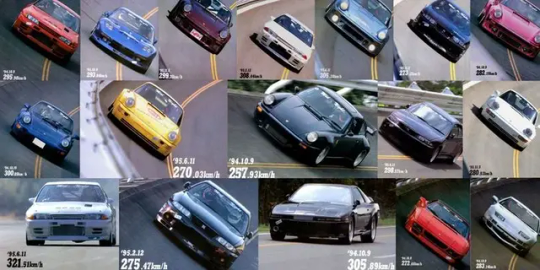

The Mid Night Club didn't focus on acceleration or cornering ability; their sole objective was top speed. To gain entry into this exclusive group, prospective members had to demonstrate their ability to maintain a speed of at least 260 km/h (160 mph) for prolonged periods and do so safely. Despite the apparent paradox, the club's gentlemen's code required members to avoid endangering others, and any reckless behavior would result in immediate expulsion.
Newcomers who met these criteria became apprentice members, needing to attend every meeting for a year before becoming full members. Throughout its existence, the club had about 30 members on average, peaking at 75. Most members could sustain speeds of 305 km/h (190 mph), while top racers could exceed 322 km/h (200 mph). Races typically began from speeds of 100-120 km/h (60-75 mph), with the third car in the pack signaling the start by honking.

Yoshida Special's 930, often referred to as the "Blackbird," is the most iconic car from the Mid Night Club, and for good reason. This extensively modified Porsche 911 Turbo (930) boasts a 3.6-liter turbocharged flat-six engine that delivers 700 bhp. It is rumored that the owner invested around $2 million in modifications. This substantial investment was necessary to create a machine capable of consistently maintaining speeds of 350 km/h (217 mph) for over 15 minutes—a feat that was challenging and costly in the mid-1990s and remains so today. Remarkably, the Blackbird is still operational.
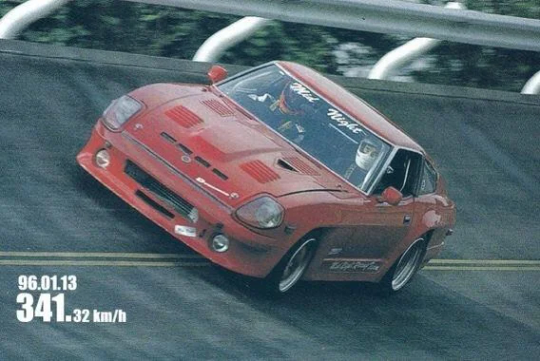
The ABR-Hosoki Fairlady Z S130, another renowned car of a Mid Night Club member, was a significant rival to the Blackbird. Originally a 1978 Nissan 280ZX, it underwent extensive modifications to become a formidable show car and eventually made its way to the Wangan. This vehicle boasts 680 horsepower and is tuned to race at speeds of 330 km/h (205 mph), with a maximum capability of reaching 348 km/h (216 mph). There is a rumor that it once outpaced the Blackbird on the Wangan, but this remains unverified.

The Mid Night Club remains a legendary chapter in the annals of street racing history. From the iconic Blackbird Porsche 930 to the formidable ABR-Hosoki Fairlady Z S130, these cars and their drivers pushed the boundaries of speed and engineering. With a strict code of conduct prioritizing safety and skill, the club's elite members and their high-performance machines continue to inspire awe and fascination among car enthusiasts and the broader public alike.
The Mid Night Club, disbanded in 1999 following a tragic incident. During a high-speed encounter with a local Bōsōzoku biker gang, a collision occurred, resulting in the hospitalization of six innocent civilians and the deaths of two bikers. This incident violated the club's strict code against endangering other drivers, prompting its immediate dissolution.
#JDM#EUDM#Street Racing#Wangan Midnight#Wangan#Car Club#The Mid Night Club#The Mid Night Racing#Japanese Cars#Blackbird#Devil Z#Car Culture#日本のストリートレーシング#ミッドナイトクラブ#ミッドナイトレーシングチーム#湾岸ミッドナイト#首都高バトル#非合法ストリートレーシング
47 notes
·
View notes
Text
Here you go guys, it’s been sitting in Tad Stones’ facebook.
10 notes
·
View notes
Photo

maximum horsecollar
why was Horace built like this in Maximum Horsepower
19 notes
·
View notes
Text

In two separate timelines, Horace Horsecollar was abducted by aliens to become the hero the galaxy needed. One wants to go home, the other wants to make sure there is a home to go back to. 🐎🪐⭐
#disney#horace horsecollar#interstellar detectives#maximum horsepower#digital art#drawing#Mouseverse
61 notes
·
View notes
Text
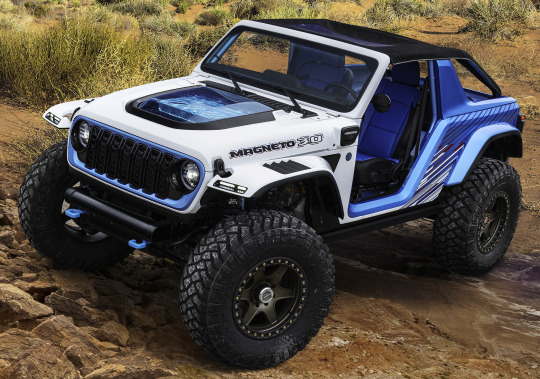
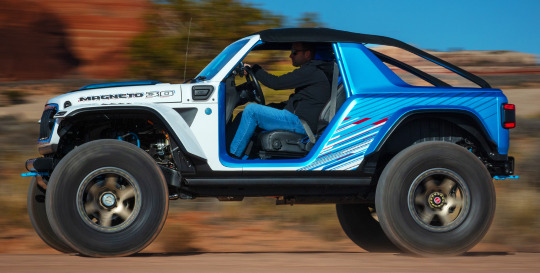
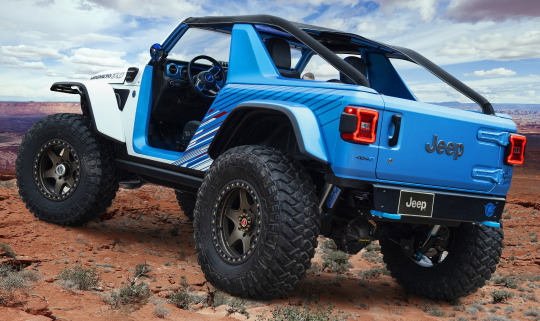
Jeep Wrangler Magneto 3.0 Concept, 2023. An update of previous Magneto concepts, this one offers three driver selectable functions that capitalise on the benefits of a fully electric powertrain in off-road situations:
Output select allows the driver to choose between two power settings (standard: 285 horsepower/273 lb.-ft. of torque; maximum: 650 horsepower/900 lb.-ft. of torque)
Two-stage power regeneration mode allows normal driving while off, or enhanced brake regeneration using the electric motor when engaged
Aggressive hill descent mode can be selected in low range to offer true ‘one pedal’ off-road driving in serious rock-crawling situations
#Jeep#Jeep Wrangler Magneto 3.0 Concept#concept#EV#electric off roader#prototype#design study#2023#Jeep Easter Safari#Easter Jeep Safari#Jeep Wrangler
199 notes
·
View notes
Text



1946 Stinson V-77 Gullwing - ACD Museum, August 2023
The Stinson Aircraft Company was founded in Dayton, Ohio in 1920 by Edward Stinson. By 1927, Northwest Airlines (now known as Delta Airlines) utilized Stinson aircraft in their fleet. E.L. Cord acquired 60% of Stinson stock in September 1929 through the Cord Corporation, which allowed Stinson to offer six aircraft models in 1930 and gave Cord his first foray into the world of air transportation. This Stinson V-77 was built for military use in WWII as a utility aircraft. Under the At-19 designation, it was used by the United States Army for training. Following the end of WWII, the surplus Stinson aircraft were sold on the civilian market as the V-77 Gullwing. This Stinson was completely restored with a wood instrument panel, leather seats and lace curtains.
SPECIFICATIONS Model: V-77 Gullwing Engine: Lycoming R-680-E3B 9-cylinder radial Horsepower: 300 at 2,200 rpm Wingspan: 41 feet, 3 inches Length: 28 feet, 3 inches – Height: 8 feet, 7 inches Maximum Speed: 145 mph Ceiling: 14,000 feet – Range: 575 miles Crew: Up to five – Armament: None Weight: 4,150 lbs.
MOVING A PLANE INSIDE Moving a plane inside a building is no easy feat. It took planning, scale drawings, and figuring out just the right angles to move the plane inside. The wings needed to be removed prior to installation inside the museum, while the horizontal stabilizers stayed on. Once the plane was inside, the wings were carefully installed using a forklift, soft moving cloths and a team of knowledgeable volunteers.
10 notes
·
View notes